Installed a few inches below the main structural ceiling is a drop ceiling.
it is also referred to as a suspended ceiling—is a secondary ceiling.
Basement drop ceiling ideas encompass various designs and materials tailored to enhance the aesthetics of your underground space.
Drop ceilings function as a decorative element that covers the main framework above, in contrast to permanent structural ceilings.
They are made up of panels or tiles that have both functional and aesthetically pleasing surfaces.
Advantages of Basement Drop Ceilings
- Simple Installation: It’s easy to install a drop ceiling. The tiles slide in place between perfectly spaced metal tracks that are suspended above the floor. If you’d rather have help from a professional, think about hiring a contractor.
- Convenient Access: The space beneath the ceiling panels is easily accessible with drop ceilings. To fix leaks in the roof, fix maintenance, or fix wiring, just take out a tile or panel.
- Better Soundproofing: The drop panels’ interplay with soundproofing improves privacy. This is a particularly useful feature for bedrooms or theater rooms.
- Hide Imperfections: Ductwork, pipes, and wires are concealed by drop ceilings. Contemporary access tiles are visually pleasant and appropriate for homes.
- Adaptable Design Options: To improve the overall appearance of your basement, experiment with different panel styles, colors, and textures.
Drawbacks of Drop Ceilings
- Decreased Headroom: Drop ceilings cause the room’s overall height and volume to decrease. In rooms with tall furniture or low ceilings, they might not be useful.
- Less Sturdiness: The quality of drop ceiling panels is diminished by their lightweight design. Sturdiness is compromised by the need for lightweight materials for easy access to ductwork.
- Possible Deterioration: Because of their composition and style, drop ceiling tiles have the potential to deteriorate over time.
Ultimately, drop ceilings are a popular option for basements and other spaces because they combine aesthetics and functionality.
Types of Drop Ceiling Materials
A. Acoustic Ceiling Tiles

- Features:
- Sound Absorption: Acoustic ceiling tiles are perfect for areas where noise reduction is crucial because of their ability to absorb sound.
- Materials: Fibrous materials such as wood, cork, plaster, fiberglass, and occasionally metal are used to make them.
- Design Options: Comes in a range of patterns, textures, and finishes.
- Resistance to Moisture: Able to withstand dampness and growth.
- Installation: Standard suspended ceiling grids can be easily fitted into and installed.
- Advantages and disadvantages:
- Advantages:
- Sturdy: Acoustic tiles are resistant to moisture absorption, rot, and cracking and have a long lifespan.
- Soundproofing: A great way to cut down on noise transfer between rooms.
- Low Maintenance: Requires little maintenance.
- Cons:
- Not Waterproof: They are not completely waterproof, but they are resistant to humidity.
- Cost: Faux tin options are more affordable than genuine acoustic tiles, which can be pricey.
- Advantages:
B. PVC Tiles

- Features:
- Material: Ceiling tiles made of polyvinyl chloride, or PVC.
- Design Flexibility: Comes in a range of patterns, hues, and textures.
- Affordability: In comparison to other materials, reasonably priced.
- Wetness Resistance: Able to withstand dampness.
- Simple Installation: Installation is doable on your own.
- Advantages and disadvantages:
- Advantages:
- Durability: Vinyl ceiling tiles exhibit remarkable resilience and adaptability.
- Affordability: An economical choice.
- Suitable for areas that are prone to moisture and resistant to humidity.
- Cons:
- Not 100% Waterproof: Although resilient, they are not watertight.
- Cost of Genuine Materials: Genuine metal tiles can be expensive, but faux tin options are more affordable.
- Advantages:
C. Metal Tiles
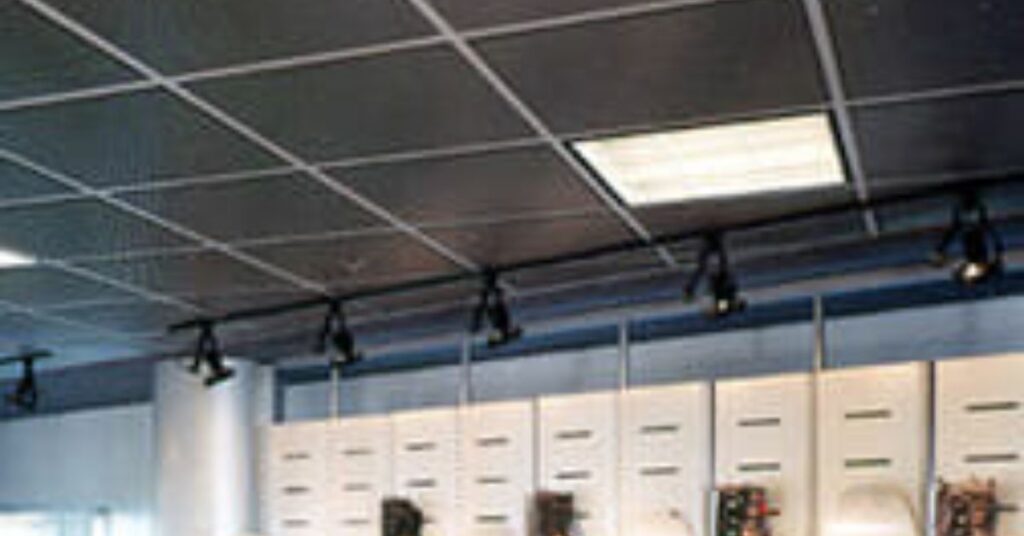
- Features:
- Materials: Copper, brass, steel, chrome, or aluminum are available.
- Finishes: Powder-coated, polished, or bare.
- Durability: Extremely strong and impervious to warping, cracking, and rot.
- Fire Resistance: A secure option is fire resistance.
- Simple DIY installation: Easy to install.
- Advantages and disadvantages:
- Advantages:
- Longevity: Metal tiles have a ten-year or longer lifespan.
- Strength: Give the structure more strength.
- Low Maintenance: Requires little maintenance.
- Cons:
- Cost: Real metal materials have a higher price tag.
- Alternatives to Real Tin: Although they are less expensive, faux tin tiles are not as durable.
- Advantages:
Select the material that most closely matches the style of your home and meets your needs! 🏠✨
Design Ideas for Drop Ceilings
A. Traditional White Grid

- Timeless and Classic: The classic white grid pattern never goes out of style. Its neutral color and simple design go well with any basement decor.
- Appropriate for a Variety of Basements: The white grid blends in seamlessly to create an unobtrusive ceiling, whether your basement is used as a home office, entertainment space, or gym.
B. Colored Tiles
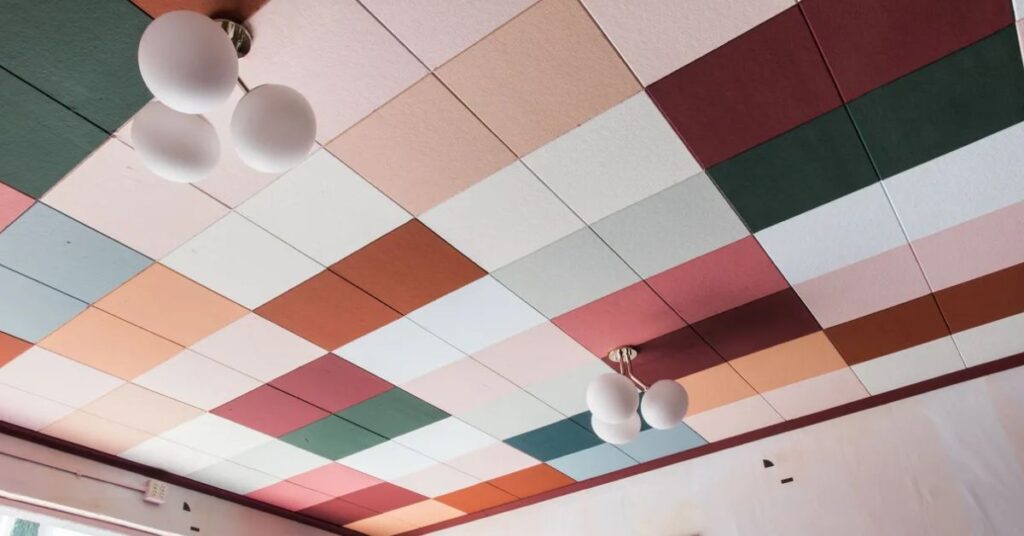
- Pop of Color: Use colored ceiling tiles to bring some life into your basement. Select colors that go with the overall theme of the room or that speak to your personality.
- Theme Coordination: Align the colors of the tiles with those of the furnishings, wall paint, and décor in the basement. Vibrant blues, cozy yellows, or soothing greens can change the mood.
C. Textured Tiles

- Visual Depth and Interest: Textured tiles give your ceiling depth and dimension. Choose subtle geometric designs, faux wood grain, or embossed patterns. Something is captivating about the way light and shadow interact.
- Material Mimicry: Recreate the appearance of tin, wood, or other materials without having to pay for or carry their weight. Textured tiles create the appearance of depth and texture.
D. Patterned Tiles
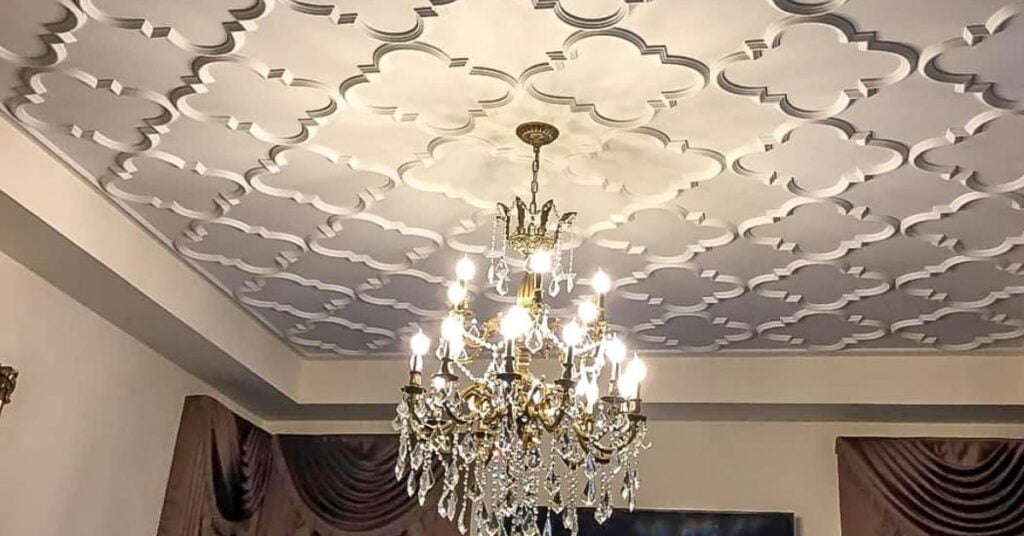
- Distinctive Style: Patterned tiles deviate from the norm. Think about elaborate patterns like florals, abstract motifs, or arabesques. The style of your basement is elevated by these tiles, which become a focal point.
- Appeal to the Eye: The overall appearance is improved by patterned tiles. There is a pattern to fit your style, whether it be bold statements or understated elegance.
Recall that you have the chance to showcase your artistic side and improve the ambiance of the basement with your drop ceiling design. Make a smart choice, then relish the transformation! 🏠✨
Lighting Options
A. Recessed Lighting
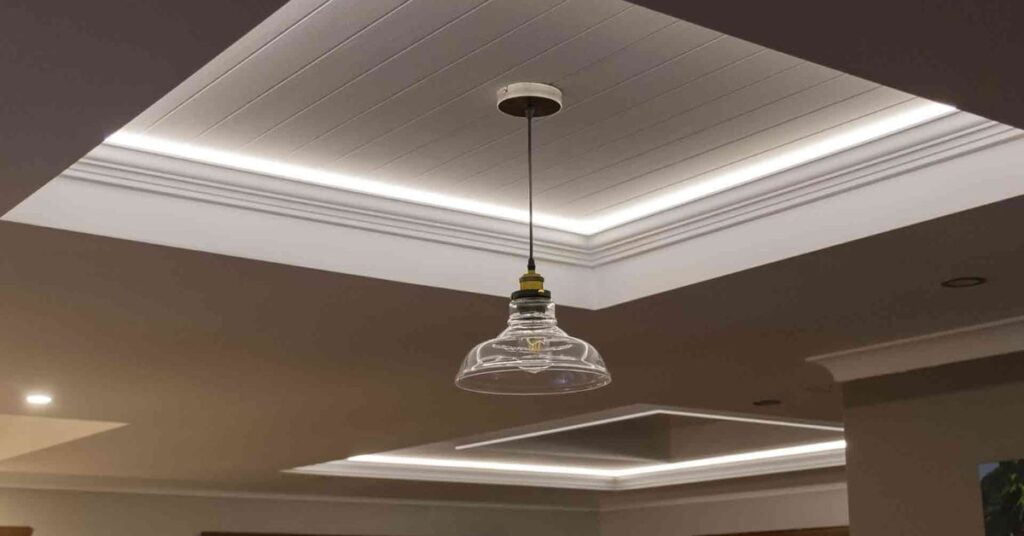
- Installation: Recessed lights are installed inside drop ceilings and go by the name can lights or downlights. They produce a tidy and inconspicuous appearance.
- Even Illumination: Recessed lights, when positioned well, give the basement a consistent glow. To prevent dark areas, think about evenly spacing them.
B. Pendant Lights
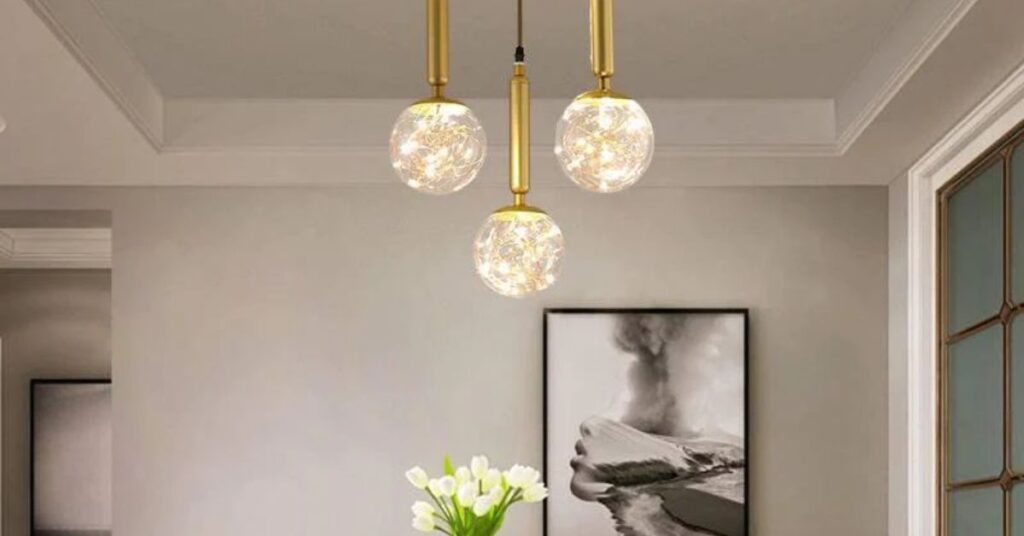
- Stylish Touch: The pendant lights add personality and visual interest by hanging from the ceiling. They are made of different materials, shapes, and sizes.
- Design Complementation: Select pendant lights that complement the style of your drop ceiling. Modern pendants or those with a vintage feel are both stylish and can improve the overall design.
C. Track Lighting
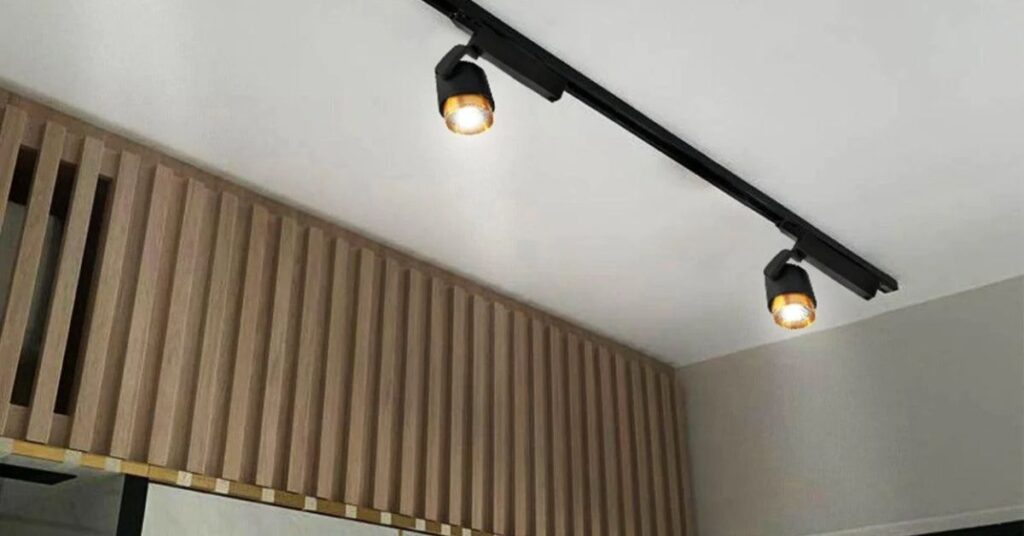
- Flexibility: Track lighting is made up of fixtures that are track-mounted and movable. They are movable and rotatable to focus light where it is needed. Perfect for basements with varying floor plans.
- Highlighting Areas: To draw attention to particular areas, like artwork, a reading nook, or a home office, use track lights. They are a sensible option because of their adaptability.
It’s important to strike a balance between utility and design when choosing basement lighting. Your room can become an entertaining center or a comfortable retreat with the correct lighting! 🏠💡
Installation tips for basement ceiling tiles
A. Proper Measurement and Planning
- Measuring the Basement Dimensions Accurately:
- Measure the dimensions of your basement carefully before starting the installation. You can calculate the quantity of ceiling tiles required by taking precise measurements.
- Planning the Layout for Alignment and Symmetry:
- Carefully consider the arrangement to guarantee correct alignment and symmetry. Think about where vents, light fixtures, and other components are located.
B. Safety Precautions
- Using Appropriate Safety Gear During Installation:
- First and foremost, safety! When working with ceiling tiles, put on safety goggles, gloves, and protective clothes. Use hand cutters rather than power tools when cutting tiles to prevent injuries from flying debris.
- Securing Ceiling Tiles Properly to Prevent Accidents:
- Make sure the tiles are affixed to the ceiling grid firmly. Long-term stability is ensured and accidental dislodging is prevented with proper installation.
C. Professional Assistance
- Seeking Help from Experienced Professionals:
- Don’t be afraid to ask for professional help if you need direction or are unsure. Expert installers can guarantee a faultless installation and offer insightful advice.
- Ensuring Proper Installation for Long-Term Durability:
- A well-installed ceiling contributes to the overall durability of your basement. Take the time to do it right, and your ceiling tiles will serve you well for years to come.
Recall that a well-done ceiling tile installation improves insulation and lessens sound reverberation in your basement area in addition to improving aesthetics. Happy installing! 🛠️🏠
Maintenance and Care
A. Regular Cleaning
- Dusting the Ceiling Tiles Periodically:
- Dust buildup on ceiling tiles is typical. Dust can be gently removed with a feather duster or a soft cloth. Maintaining clean tiles requires routine cleaning.
- Removing Stains or Marks Promptly:
- Marks or spills can happen by accident. Take quick action to avoid long-lasting stains. To clean the affected areas, use a soft cloth and a mild soap solution.
B. Inspections
- Checking for Signs of Damage or Wear:
- Make sure to periodically check your ceiling tiles for wear, cracks, or other damage. Keep an eye out for discoloration, water stains, or drooping tiles.
- Repairing or Replacing Damaged Tiles Promptly:
- Take quick action if you find any problems. To preserve the overall integrity of your ceiling, replace or repair damaged tiles.
Recall that regular maintenance keeps your basement ceiling long-lasting and aesthetically pleasing. Cheers to being kind!🛠️🏠
Conclusion
- For basement spaces, drop ceilings, also called suspended ceilings, have several benefits. Among them are:
- Simple Access: Utilities (plumbing, wiring, etc.) concealed above the ceiling tiles can be easily accessed with drop ceilings.
- Sound insulation: They lessen the amount of noise that travels between levels.
- Aesthetic Appeal: By hiding structural components, drop ceilings can improve the overall appearance of your basement.
- Thermal Insulation: They enhance energy efficiency and insulation.
- Customization: To fit the aesthetic of your basement, you can select from a variety of tile designs and materials.
- Use your imagination! Think about various tile textures, colors, and patterns. For a sophisticated touch, consider alternatives like recessed lighting, decorative panels, or even acoustic tiles.
- Recall that stability and longevity are guaranteed by a drop ceiling installed correctly. It will remain in excellent condition for many years with routine upkeep, such as cleaning and inspections.
FAQs
What are some popular basement drop ceiling ideas?
Explore trendy options like suspended acoustic tiles, faux tin panels, wood planks, or even fabric ceiling treatments to enhance your basement’s aesthetic appeal.
How do I choose the right drop ceiling for my basement?
Consider factors such as budget, style preferences, moisture resistance, and ease of installation when selecting a drop ceiling option for your basement.
Can I install recessed lighting in a drop ceiling?
Yes, recessed lighting can be easily incorporated into a drop ceiling design to brighten up your basement space and create a modern look.
What are some budget-friendly basement drop ceiling ideas?
Opt for affordable materials like PVC tiles or basic suspended grid systems to achieve a stylish drop ceiling look without breaking the bank.
ALSO READ:
Effortless DIY Popcorn Ceiling Removal: Step-By-Step Guide
5 Affordable Basement Ceiling Ideas: That Will Change Your Room
